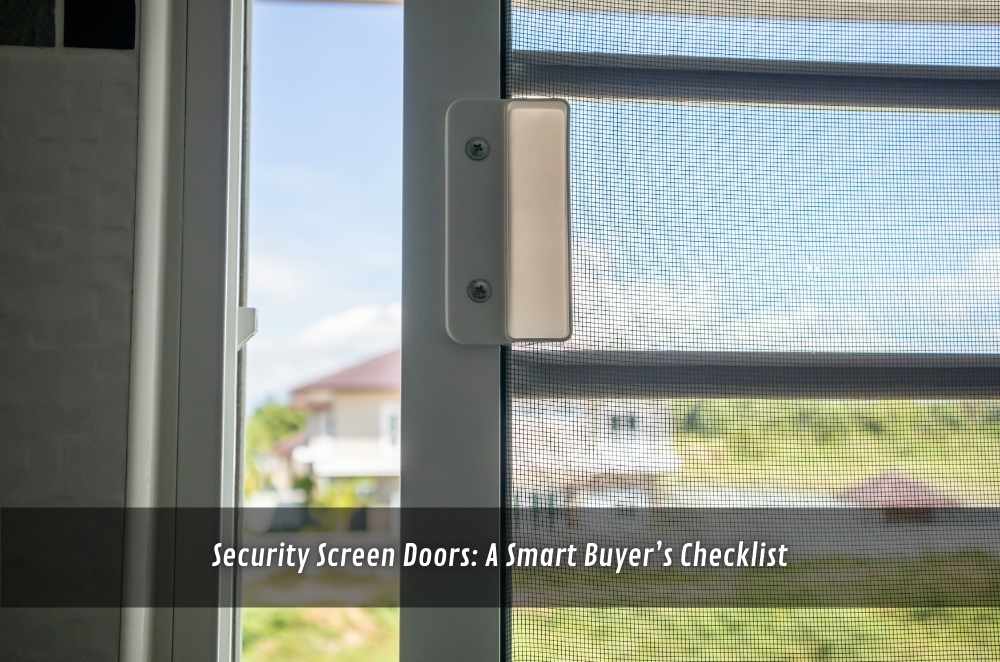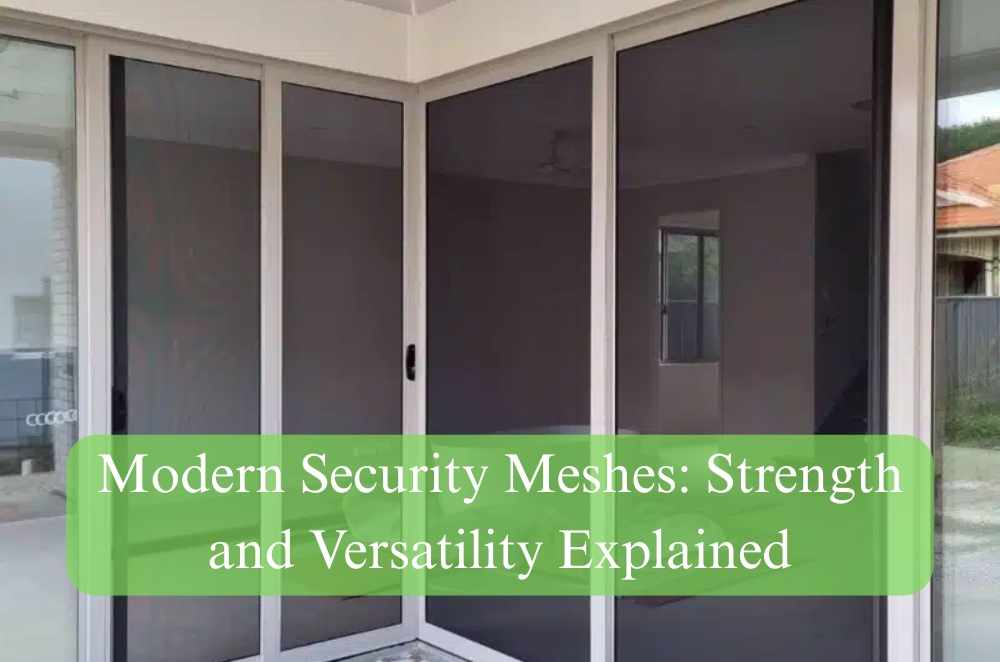
If you’re weighing up options for a safer front entry or a breezier back deck, the trick is knowing what separates a true security door from a decorative screen. Start by shortlisting installers with proven track records, then check their products against standards, hardware, and fit. If you want a tailored quote and proper templating, consider security screen door installation so the door is measured, built, and installed for your opening — not “close enough”.
Know the benchmarks for a real security door
A good-looking grille isn’t automatically secure. Quality doors are designed, tested, and installed to resist attacks on the frame, mesh, and locking points.
Frames should be rigid (look for thicker sections and corner stakes or fully welded corners).
Infill/mesh matters: stainless or high-grade aluminium mesh handles impact and knife-shear better than light decorative grilles.
Fixing method counts: Rivets alone are weaker than clamping systems that lock mesh into the frame to resist pull-out.
Door sets are only as strong as their installation: poor fixing into crumbly brick or timber negates good hardware.
For government-backed guidance on safer home habits and choosing doors that comply with Australian standards, review security screen door standards as a baseline when comparing products.
Materials and mesh: What to pick (and why)
Your site conditions drive the right material choice.
Stainless steel woven mesh: Excellent strength and visibility; resists knife shear and impacts. Great for coastal areas when paired with proper powder coating and isolation from dissimilar metals.
Perforated aluminium sheet: Solid all-rounder with good airflow and privacy; easier cleaning than woven mesh in dusty areas.
Decorative grilles with flyscreen: OK for insects and basic safety, but not on the same level as true security mesh systems.
Frame alloys and finishes: Marine-grade powdercoats and stainless fixings help in salty suburbs; avoid mixed metals that can corrode.
Field note: I once replaced a “security” door on a bayside rental that had mild steel screws into a treated-pine jamb. Two years of sea air and they’d rusted thin — the lock side moved 5 mm under a firm push. The new set used stainless fixings in fresh hardwood and a full-length strike plate; night-and-day difference.
Locks, hinges, and how doors actually stay shut
Hardware is where many budget doors quietly compromise.
Multi-point locking spreads the force: top, centre, and bottom bolts resist prying. If you’re evaluating options, a primer on triple lock security doors will help you spot genuine three-point systems versus look-alikes.
Quality cylinders (keyed alike if you prefer) should be pick- and bump-resistant; cheap cylinders are the weak link.
Hinges should be heavy-duty with security pins or a continuous piano hinge to prevent lift-off.
Strikes and keepers: Full-length strike plates and robust keepers spread load and protect the jamb.
Ventilation, privacy, and pet-life realities
Security doesn’t mean living behind bars. You can tune the door to your lifestyle.
Airflow vs privacy: Woven stainless offers great airflow and a “clear view” look; perforated sheet lifts privacy slightly at the expense of a bit of breeze.
Sightlines: Dark mesh tends to “disappear” better than light; check a full-size sample against your entry.
Pet doors: Choose models that lock cleanly and don’t compromise the lower rail’s integrity; reinforcement plates help.
Door closers: Soft-close units stop slamming and save the latch from wear (and your ears at 2 am).
Bushfire and coastal considerations
Location shapes the spec.
Bushfire zones: In BAL-rated areas, choose products tested for ember attack and radiant heat. For a comparison piece to reference when planning, see bushfire-rated security screens.
Coastal suburbs: Specify marine-grade finishes and ask the installer how they isolate stainless steel from aluminium to avoid galvanic corrosion.
Storm readiness: Look for tight seals, quality thresholds, and drainage paths so wind-driven rain doesn’t creep under the door.
Measuring, fabrication, and installation: Get the basics right
A great door can still fail with sloppy installation. Here’s the process that protects performance.
Site measure: The installer should record three widths and heights, check squareness, and identify the hinge side that best resists prying.
Substrate check: Brick? Steel? Old timber? They should confirm appropriate fixings and whether the reveal needs repair.
Template and fabrication: Expect cut-outs for locks and closers to be factory-precise; field drilling can weaken finishes.
Install: Fix into the sound substrate with stainless or galvanised hardware, fit the striker correctly, and confirm weather seals contact the frame all around.
Commissioning: Hinges aligned, latch throws smoothly, keys and cylinder codes recorded, and door closer tuned.
Quick lived example: A neighbour’s door “felt flimsy” even though the mesh spec matched mine. The culprit? Three short screws into an old, split jamb. Replacing the jamb section and fixing through to solid timber turned the “flimsy” door into a tank in under an hour.
What to look for in a quote (so you compare apples with apples)
Product spec: Mesh type, frame section, finish, and exact locking set model.
Inclusions: Hinges, closer, full-length strike, bug strip, threshold ramps.
Installation scope: Fixing type, substrate repairs, sealing, and rubbish removal.
Compliance statements: Reference to Australian Standards/testing and warranty terms.
Lead time and service: Expected fabrication time, booking window, and aftercare.
If a quote feels “light”, ask for a one-page spec sheet and a photo or sample of the exact mesh and hardware. You’re not being fussy — you’re protecting your spend.
Common mistakes (and easy fixes)
Buying on looks alone → Check test performance, locking points, and installation method.
Ignoring the jamb → Soft, cracked ,or narrow jambs need reinforcement or replacement.
Skipping maintenance → A yearly wash-down and hinge oiling extends life, especially near the coast.
Forgetting kids and pets → Choose latch heights, closers, and pet flaps that suit the household.
A simple decision pathway you can follow
Define priorities: Breeze, privacy, coastal durability, bushfire considerations.
Set the spec: Mesh type, frame, multi-point lock, hinge style, closer, and threshold details.
Check standards & habits: Cross-check against security screen door to keep choices grounded in best practice.
Shortlist installers: Look for experienced teams with solid warranties and clear quotes.
Book a measure-and-quote: Bring photos and note any tricky jambs or weather exposure.
Confirm install details: Fixings, seals, strike plates, and aftercare — in writing.

Bringing it together
A great security screen door is a system: a strong frame, tough mesh, quality locks, and an installation that anchors everything to your home properly. If you keep the checklist above close, you’ll avoid the usual traps and end up with a door that feels solid, breathes well, and lasts. When you’re ready to compare options or want a tailored fit-out for a busy entryway, start with security screen door installation and use the government’s guidance on security screen door standards as your north star.







Write a comment ...